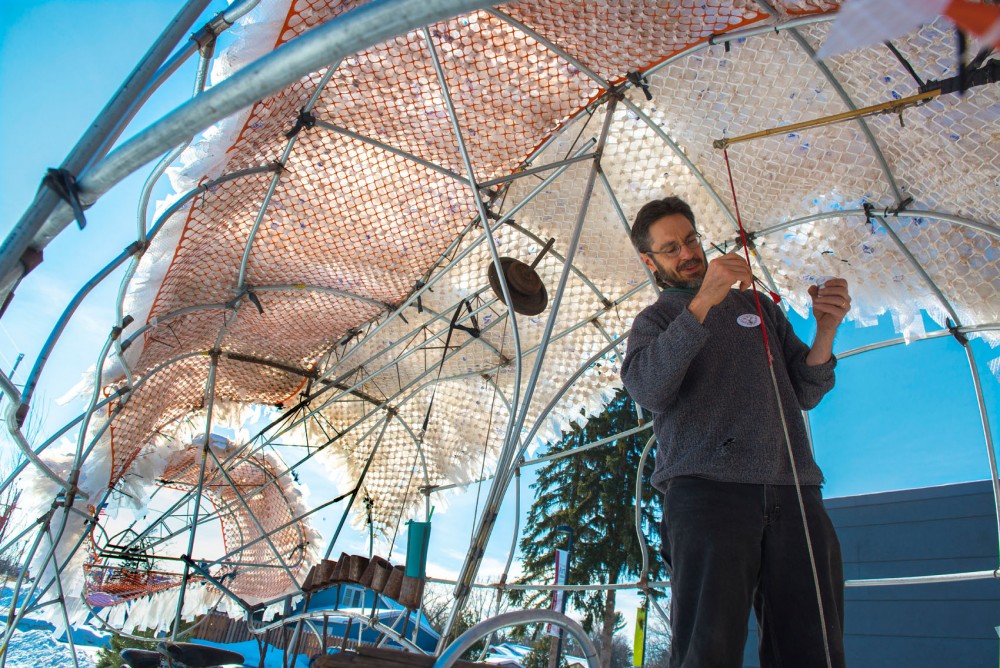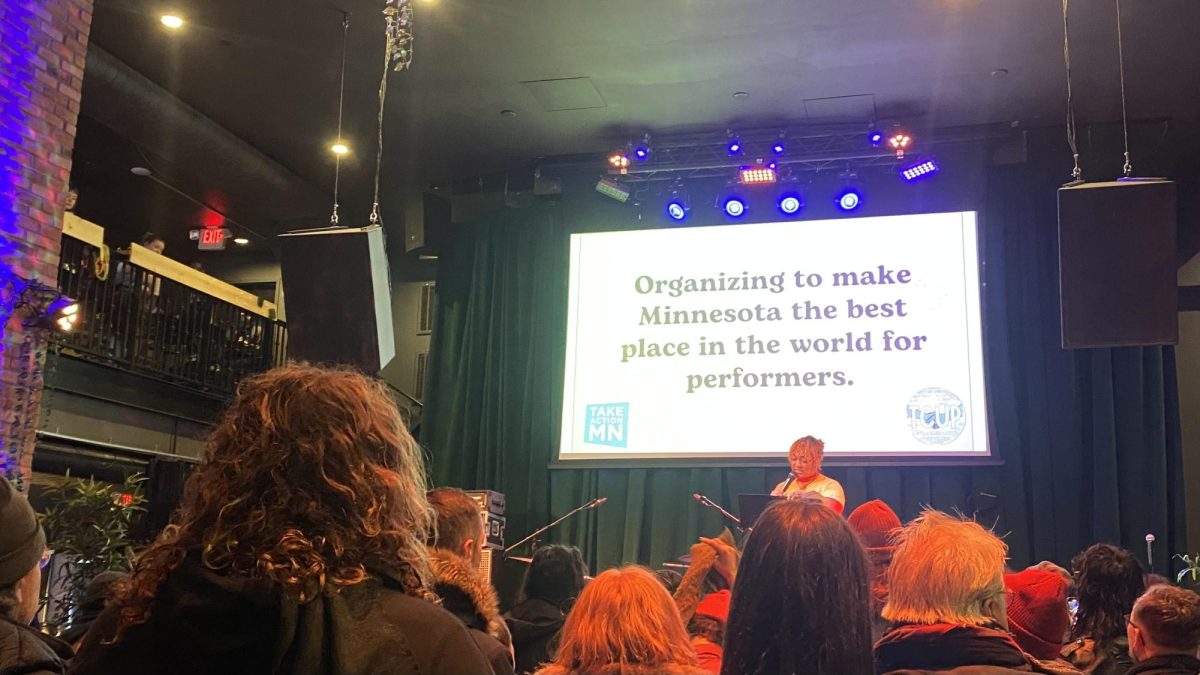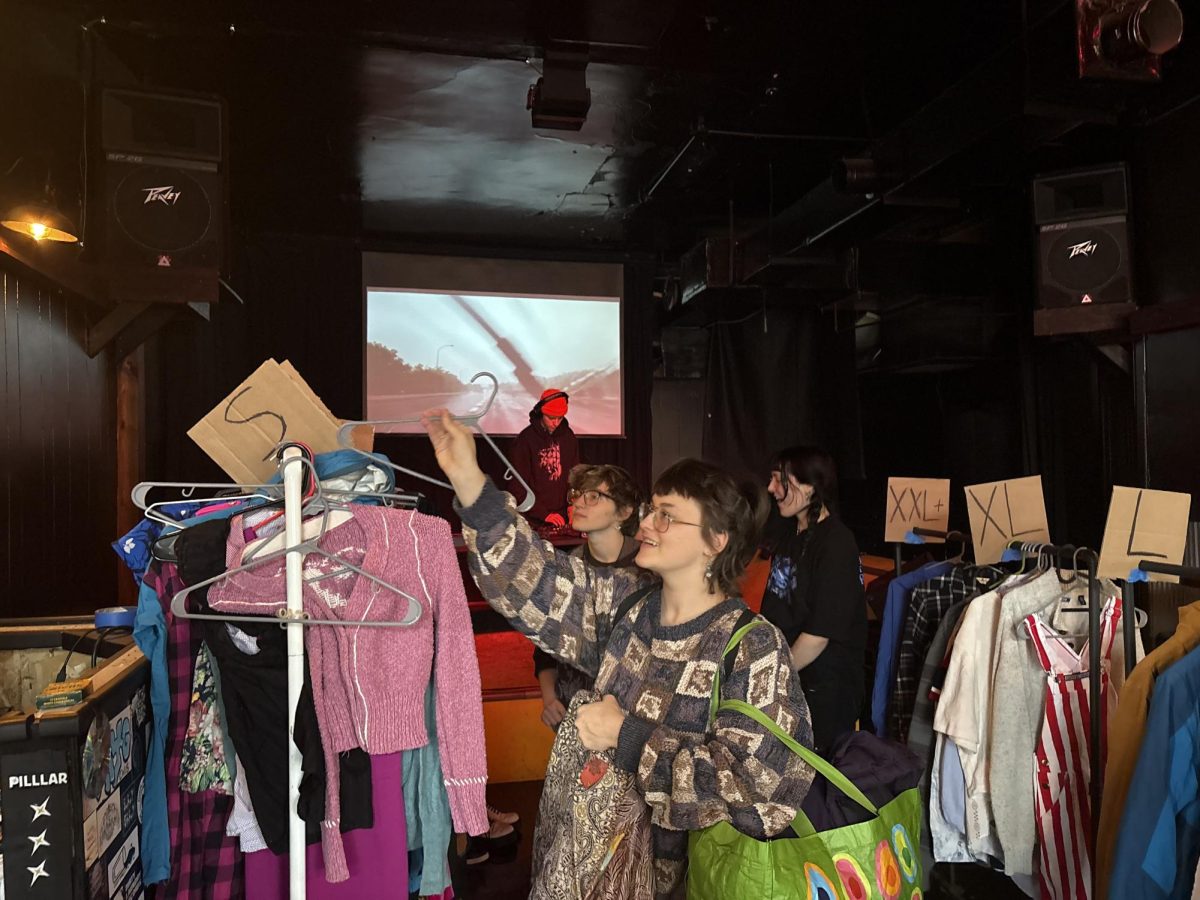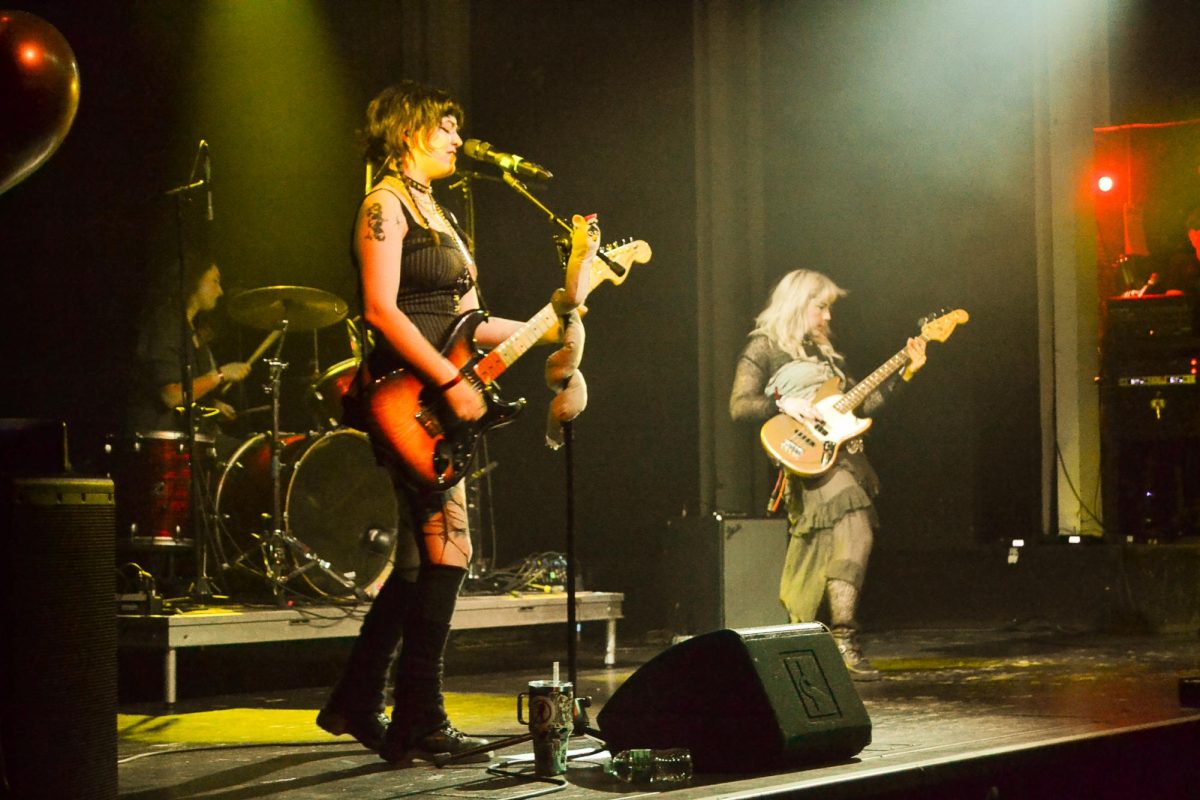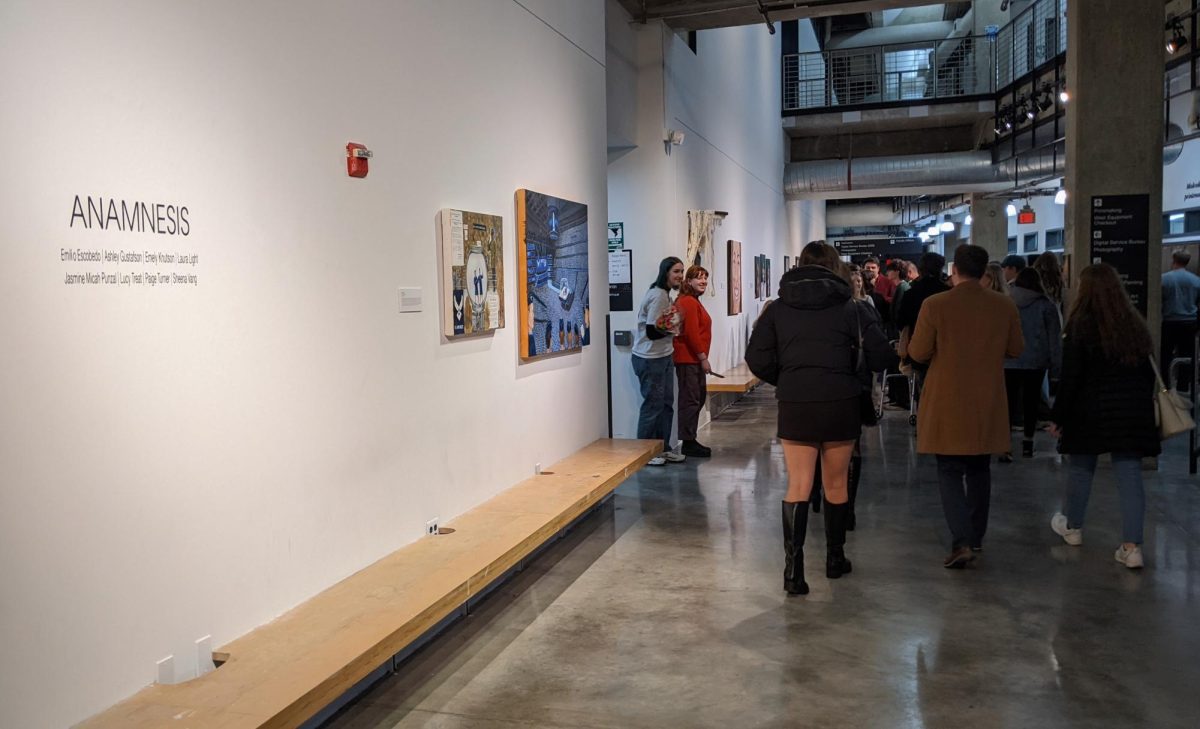Minnesotans have learned that the only way to survive the winter year after to year is to embrace the cold and make the most of the snow and ice.
That would explain the record-breaking 20,000 people who visited the biannual Art Shanty Projects on Medicine Lake during the dead of winter in 2012.
The artfully constructed ice houses return this year but are calling White Bear Lake their new home.
“If you put on warm clothes, go out on the ice and join in, you’re going to have a great time,” said Mina Leierwood, a shanty artist. “It’s kind of a free-for-all. It’s like you’ve got a little piece of real estate.”
Local artists Peter Haakon Thompson and David Pitman started the Art Shanty Project with just two shanties in 2004. They wondered what would happen if they added an artistic element to the Northern tradition of creating temporary ice fishing communities on mostly unregulated space.
For the first few years, Thompson and Pitman’s close friends were the only visitors. But word began to spread and soon more people wanted to create shanties of their own, because that’s what Minnesotans do — they hang out on the ice in the middle of winter for fun.
Melinda Childs, the project director, said she’s anticipating daily attendance in the thousands, even with the relocation. The project artists welcome the growth in popularity and participation, she said, but don’t want to negatively impact the environment or fishing community. The project is capped at 20 shanties to regulate the size of the community.
Artists submitted about 50 project proposals this year to a jury of past shanty artists and art professionals from around the Twin Cities. The jury’s selections receive grants and a spot in the temporary lake community. Panelists consider the project’s feasibility, the artistic concept and how the shanty will engage participants.
The Norae (Karaoke) Shanty and Dance Shanty have been so popular that the jury has selected them several times for repeat appearances.
Going up
This year will be Cali Mastny’s third year participating with her group of friends. Their previous shanties were the Tiny Shanty — a mansion replica shrunk down to the size of an ice house and Monsters Under the Bed Shanty — which featured monster eyes, a tentacle and a paw peeking out from underneath.
This year, the group wanted to create a shanty that was less child-focused and more inclusive of people of all ages, so they came up with Elevator Shanty.
“An elevator is a good space to put people in and mess with them a little bit or give them some kind of interaction,” Mastny said.
The shanty has operating elevator style doors, buttons that light up from solar power, a costumed operator who will help guide the experience and, of course, cheesy elevator music.
“In previous years, we saw people walk in to a shanty and say, ‘OK. Now what do we do?’ But you don’t really ask what you do in an elevator,” Mastny said. “Admittedly, people might be a little confused because it’s an elevator on a lake. But they know it’s not going to go up and down.”
Newcomer Ady Olson said her group, responsible for the Town Hall Shanty, is figuring it out as they go along.
“It’s been a really great experience, and our team worked really well together,” she said. “I wouldn’t say it’s been difficult, but it’s been challenging. My friends and I have jobs where we think a lot during the day or we do these routine things. Going out and physically creating a structure is very different for us, and it’s actually very refreshing.”
Her group includes two bakers, a few teachers, a geologist, an urban planner, an actor and a science museum employee.
Olson said she didn’t anticipate how “free” the experience would make her feel. The group’s energy and excitement is always intense, she said. When they went to Home Depot to get oriented strand board, an employee remarked, “I’ve never seen a group of people get so excited about OSB before.”
Leierwood collaborated with a “dream team” of designers, engineers and welders to create a 25-foot-long, 12-foot-high polar bear on wheels in honor of the project’s new location.
“We have these urban welder bicycle enthusiasts, the ‘Hard Times’ bike crew — I don’t even know how to explain them — that built the frame by repurposing parts from an old VW,” she said.
The transmission is still intact, allowing the driver to throw the pedal bear into first or second gear or reverse, while 10 people pedal together to power it.
“Minnesota has its own arts aesthetic. We like things that are homemade. We like to see how it’s built. It doesn’t have to be glamorous or glitzy. It has to be authentic. It has to have heart,” she said. “That dorky flannel shirt, the beard, a ukulele — that is so Minnesota! It warms the cockles of your heart.”


